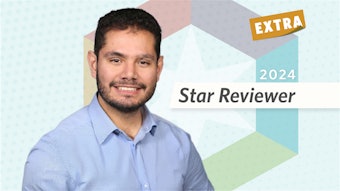Charting Our Course: Your Academy's Strategic Plan
The distinction between strategic and operational planning is crucial. Strategic planning establishes our long-term direction and is driven by our vision, while operational planning translates this into annual priorities and tangible work.
 Rahul K. Shah, MD, MBA
Rahul K. Shah, MD, MBA
AAO-HNS/F Executive Vice President and CEO
What began as a thorough and deliberate process has culminated in a comprehensive and responsive roadmap for our approximately 13,000 members. Strategic planning isn't simply about projecting where we are today into the future; it's about envisioning where otolaryngology-head and neck surgery needs to be in the next decade and creating the path to get there.
Beginning in December 2024, with an online membership survey garnering 134 responses and one-on-one conversations with 16 member leaders, we gathered diverse perspectives that informed our two-day Strategic Planning Meeting in late January. There, 35 dedicated members engaged in robust discussions about our future direction. We then refined the draft over subsequent months, culminating in Board approval on April 27.
The process reminded me of the complex clinical decisions you make daily. Just as you synthesize history, examination findings, and diagnostic results to develop a treatment plan, we've methodically considered member input, environmental factors, and organizational capabilities to craft our Strategic Plan. For the investment of time and resources in this strategic planning process, we've created the framework that will guide the allocation of our resources for years to come.
What emerged from this comprehensive process reaffirms our vision (core purpose): "The global leader in optimizing quality ear, nose, and throat patient care." Our mission statement articulates this purpose more fully: "We engage our members and help them achieve excellence and provide high-quality, evidence-informed, and equitable ear, nose, and throat care through professional and public education, research, and health policy advocacy." These aren't just words on a page—they're the foundation of everything we do.
The Strategic Plan is organized around two interconnected goals. The first focuses on our specialty: "Otolaryngology-head and neck surgery is a unified specialty dedicated to high quality, equitable care." The associated objectives include being the authoritative voice of the specialty, increasing advocacy engagement, decreasing administrative and financial burdens on practices, promoting workforce diversity, and decreasing fragmentation of our specialty.
The second goal addresses our Academy: "The AAO-HNS fosters a global and inclusive otolaryngology-head and neck surgery community." We'll achieve this through increased member engagement (domestic and international), increased member engagement in advocacy, enhanced unity among subspecialty societies and other organizations, diversified revenue streams, and forward-looking organizational positioning.
As I discussed succession planning in a previous column, strategic planning is similar—either you deliberately shape your future, or circumstances will dictate it for you. I prefer the former approach. That's why our implementation began May 1 with your Academy staff crafting specific strategies aligned to our objectives.
The distinction between strategic and operational planning is crucial here. Strategic planning establishes our long-term direction and is driven by our vision, while operational planning translates this into annual priorities and tangible work. Both flow into our budget, ensuring resources align with our strategic imperatives.
What's particularly gratifying about this plan is how it builds upon the modernization initiatives I've previously shared. Our AI knowledge assistant, the Reg-ent℠ registry overhaul, our upgraded meeting spaces, and our digital marketing platform are all components of this broader strategic vision. The difference now is that we have a comprehensive framework that ensures all these elements work in concert toward our common goals.
The question I posed during our strategic planning session—"When do we address mission/vision?"—reflects my belief that a strategic plan is never truly "finished." It evolves as our specialty evolves, as medicine evolves, and as society evolves. Your Academy will remain at the forefront of these changes, advocating for your interests and providing the resources you need to deliver exceptional care.
Our Strategic Plan belongs to all 13,000+ of us—it's a reflection of your needs, aspirations, and commitment to our specialty and patients. As your EVP/CEO, I'm committed to ensuring this plan doesn't just sit on a shelf gathering dust. It will live and breathe through regular updates on our progress as we finalize strategies, identify resource needs, develop budgets, and adapt to emerging realities. The Academy needs you, and I know with certainty that you need a strong, unified Academy. This strategic roadmap ensures that this crucial, two-way relationship remains powerful, productive, and poised for the challenges ahead. Together, we're not just planning for the future; we're actively creating it.


















